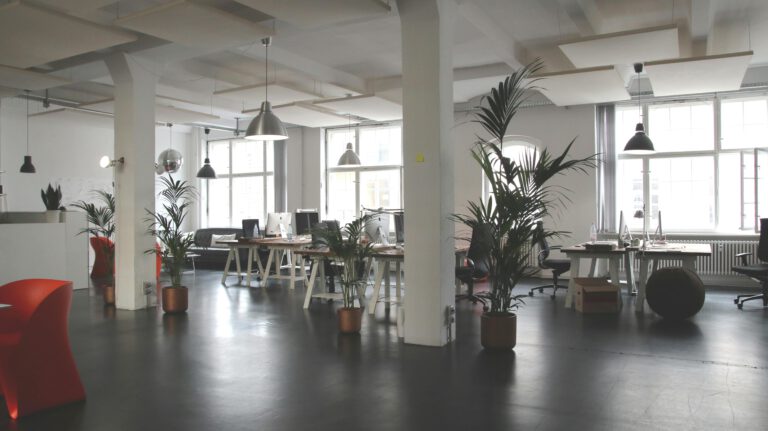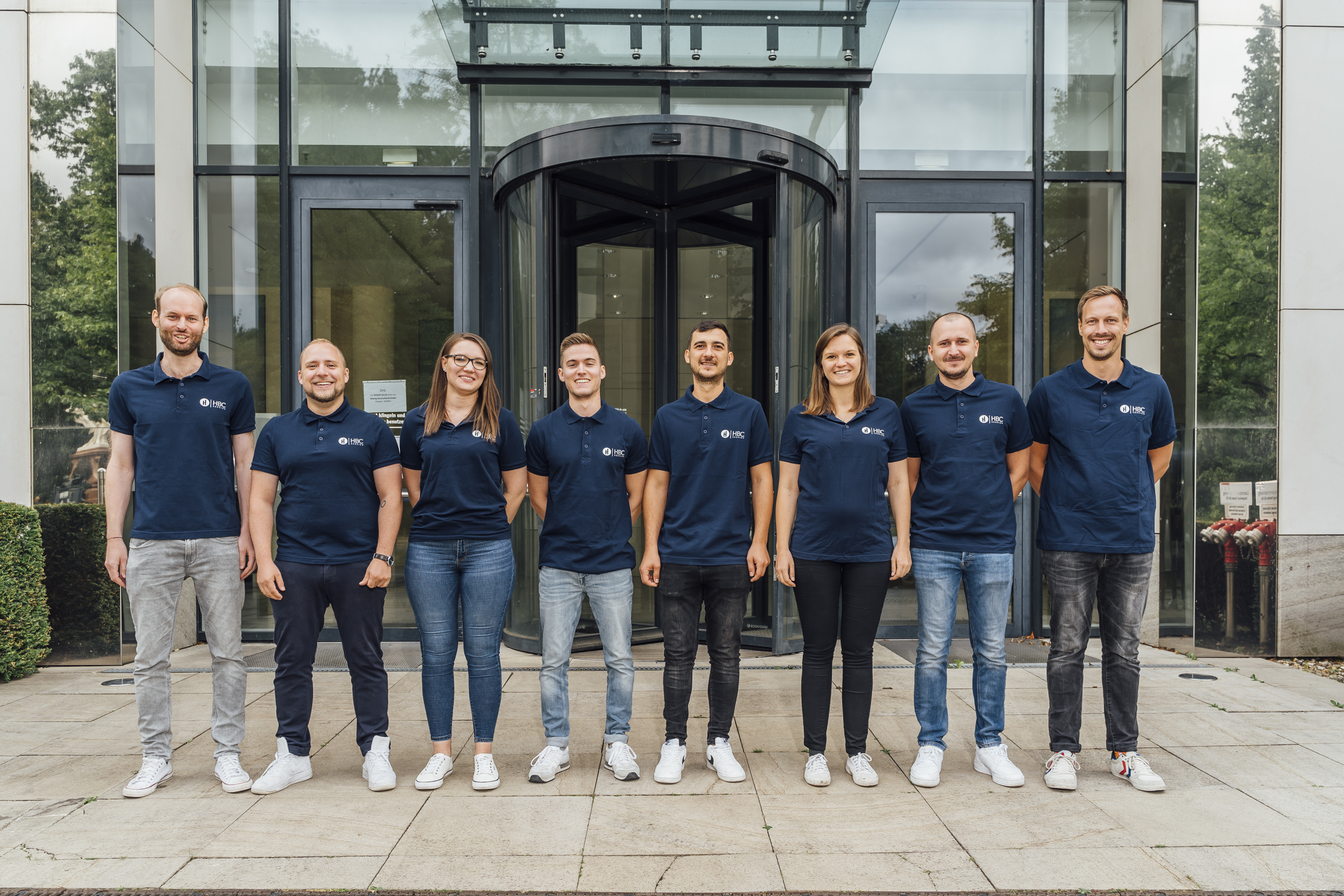The future of the office: Is the comeback or retreat coming?
A major upheaval has reduced the demand for office space worldwide. The question now is, what does the future of the office look like?
The question of the future of the office is one of the central challenges of the modern working world. Between the boom in working from home, digital innovations and cultural change, many companies are asking themselves: will offices still be needed in the future - and if so, in what form and to what extent?
The article "The Future of the Office" [McKinsey, 2025] by the management consultancy deals with this, we summarize the most important points and extensions for you here.
Less office, but not no office
Since the COVID-19 pandemic, the way we work has changed fundamentally [McKinsey 2020]. Millions of people worldwide have learned that productive work is also possible outside the traditional office - often even more efficiently and with less stress. Studies show: A large proportion of employees no longer want to return to the office five days a week, even after the pandemic. For example, the OECD describes in a report how teleworking has become permanently established as a result of the pandemic [OECD, 2023].
As a result, many companies have started to reduce their floor space. According to a survey by real estate consultants JLL, around 60% of European companies are planning to reduce their office space in the coming years - in some cases by up to 30%. Furthermore, 77% of companies are planning hybrid working models and 55% want to redesign office space. Particularly in large cities with high rents, new hybrid working models are becoming an economic necessity [Jones Lang LaSalle, 2022].
The COVID-19 pandemic thus shook up long-standing workplace norms and ushered in a new era for office real estate. While the impact varied from region to region, the global impact was a significant drop in daily office visits and a general decline in demand for office real estate.
It has been a year and a half since McKinsey published "Empty spaces and hybrid places: The lasting impact of the pandemic on real estate" [McKinsey, 2023]. The comprehensive report examined how the COVID-19 pandemic impacted office presence, occupancy and demand. It also examined related factors, including the shift of the residential population from city centers to the suburbs - which usually means fewer visits to the office.
In its latest study on the future of the office, McKinsey concludes that demand for office space - at least as it is currently designed and delivered - is very likely to be lower in many cities by 2030. This fact presents real estate owners, operators and the companies that use offices with the challenge of designing a new generation of spaces that best support future performance. But it's not just for those in the office sector that behavioral change is important. Retail and residential property owners and operators can also benefit by considering how lifestyles have changed and how they can modernize their properties accordingly [McKinsey, 2025].
Statistics from the McKinsey study that prove the change:
● The average for presence in the office has settled at 3.5 days per week.
● -13% is the likely decrease in demand for office space in 2030 compared to 2019. Managers of companies that own and operate office buildings and companies that use offices are confronted with this new challenge and the organizational changes.
● 56% of companies already have hybrid working models.
● For 20% of employees in the companies surveyed, the main reason they come to the office is to work with the team
● Up to 30% of working time could be automated with artificial intelligence across all industries by 2030.
Offices are used differently, they are not becoming less important
Nevertheless, this does not mean the end of the office. On the contrary: the function of the office is changing. Instead of being a place of daily work, it is becoming a center for collaboration, creativity and corporate culture. Employees come to the office to exchange ideas, hold workshops or get to know new team members - no longer primarily to complete tasks.
This change requires new space concepts: open work areas, flexible meeting rooms, quiet zones, creative labs. Traditional individual or open-plan offices are increasingly taking a back seat. Demand is shifting from "more space" to "more usable space".
Influence of the pandemic: catalyst instead of cause
COVID-19 was not a trigger, but an accelerator. New work, remote work and agile organizations were already being discussed before the pandemic. However, the crisis has shown how quickly structures can change when necessary - and how many benefits are associated with flexible working models. Harvard Business Review analyzed the long-term impact of COVID-19 on workplace design even in the early stages of COVID-19 [Thomason, et. al., 2020].
The main long-term effects of the pandemic can be summarized in three points:
- Hybrid is the new normal: most companies rely on a mixture of office and remote working.
- Digitalization is a priority: investments in digital tools, secure infrastructure and virtual collaboration are increasing.
- The focus is shifting to health and well-being: from the indoor climate to hygiene concepts and mental health - the office must be a safe, supportive place.
What will happen to the office space?
In many regions, a decline in demand for traditional office space is already noticeable - particularly among large tenants. At the same time, new uses are emerging: Shared offices, co-working spaces, temporary project areas or mixed concepts with catering and leisure facilities.
Not all sectors are affected in the same way. While tech and creative companies can often operate more flexibly, the office remains central in regulated or industry-oriented sectors. Cultural differences also play a role - for example between the USA, Northern Europe and Asia.
Future prospects: fewer square meters, more quality
The future of the office is not an either/or situation. It is not a question of "office or home office", but rather a sensible combination of both worlds. In many cases, offices will be smaller, but of higher quality, more social and more closely aligned with people's needs.
Architects, urban planners and companies are faced with the challenge of developing new usage concepts - for a working world that is no longer tied to fixed locations, but still needs places to meet. The risk for landlords of office space is increasing and more responsibility is being transferred to property owners. [PricewaterhouseCoopers, 2024]
Smaller office spaces, which are used in a hybrid and much more flexible way, also require new concepts from building cleaners, as smaller spaces increase the importance of office cleaning as part of a company's holistic health management. Smaller spaces that are used more intensively also need to be cleaned more intensively and at shorter intervals [Jones Lang LaSalle, 2021].
Conclusion
The future of the office is hybrid, flexible and people-centered. Pure office space will decrease in many cases, but the office as an idea - as a place for identification, culture and collaboration - will gain in importance. The decisive factor is not the size, but the added value that the office offers people. Building cleaning service providers play a major role here in ensuring that these goals can be achieved for the respective companies.
-
Sources:
[1] Jones Lang LaSalle, 2022: The Future of work survey 2022, https://www.jll.co.uk/content/dam/jll-com/documents/pdf/research/global/jll-future-of-work-survey-2022-v1.pdf
[2] McKinsey, 2020: Reimaging the office and work life after COVID-19,
https://www.mckinsey.com/capabilities/people-and-organizational-performance/our-insights/reimagining-the-office-and-work-life-after-covid-19
[3] OECD, 2023: The surge of teleworking: a new tool for local development, https://www.oecd.org/content/dam/oecd/en/publications/reports/2023/09/the-surge-of-teleworking-a-new-tool-for-local-development_6b88f7da/5eb3b9f2-en.pdf
[4] McKinsey, 2023: Empty spaces and hybrid places, https://www.mckinsey.com/mgi/our-research/empty-spaces-and-hybrid-places
[5] McKinsey, 2025: https://www.mckinsey.com/industries/real-estate/our-insights/the-future-of-the-office
[6] Thomason et. al, 2020. Thomason, Bobbi and Williams, Heather, Harvard Business Review: What will work-life balance look like after the pandemic?,
https://hbr.org/2020/04/what-will-work-life-balance-look-like-after-the-pandemic
[7] PricewaterhouseCoopers, 2024: Emerging Trends in Real Estate,
https://www.pwc.com/gx/en/asset-management/emerging-trends-real-estate/assets/emerging-trends-in-real-estate-europe-2024.pdf
[8] Jones Lang LaSalle, 2021: How office cleaning is going the extra mile,
https://www.pwc.com/gx/en/asset-management/emerging-trends-real-estate/assets/emerging-trends-in-real-estate-europe-2024.pdf






